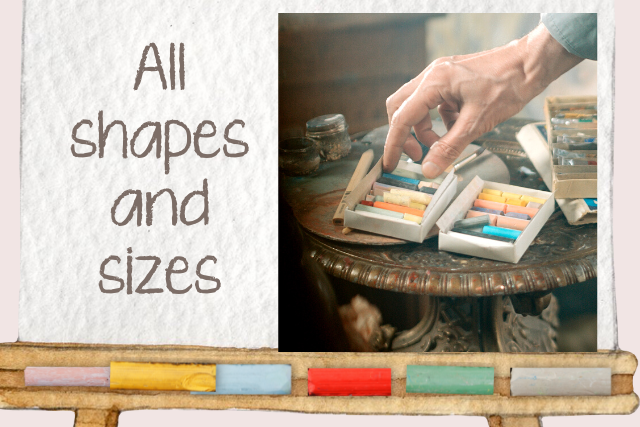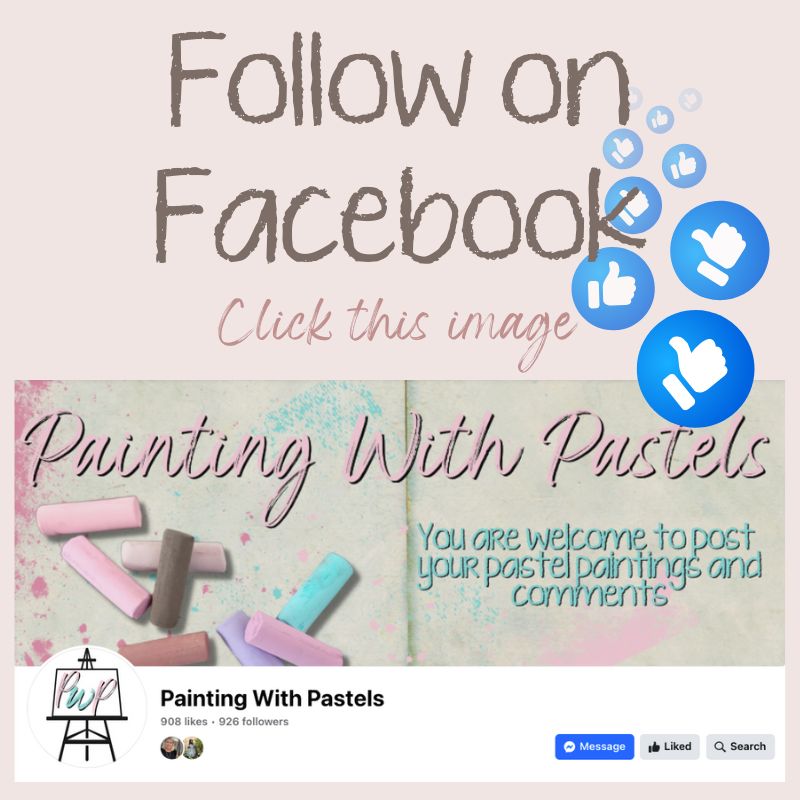Even though there are many different types of pastels they are essentially small-sized sticks that are obtainable in several shades.
Using pastels you are able to bring forth diverse moods in any painting. Painting with pastels gives a flexible medium that provides you with the freedom to improvise and experiment with as you like. Using pastels, you can create any painting, from a beautiful landscape to a lovely portrait.
The different types of pastels come in a wide variety of brands and usually in full or half-sized sticks. You can purchase them individually or in sets from 12 upwards. To begin with, it’s good to get a set of 12 or 24 just to play around with. This will give you some idea of the colours you will use most often. From there you then are able to build up your range by replacing the colours you use most often.
An alternative is to buy sticks separately, especially when you are just starting out. The painting below was done with a very limited palette, using only four colours: black, white, brown, and tan.

There are three main types of pastels: soft, hard, and oil. Other available ones are conté sticks and pastel pencils.
Pastels are available in a wide choice of tints. Most pastel manufacturers make a basic tint and also a range of tints that are darker or lighter. These tints are given a code number for identification. From the wide choice of tints available, select the second or third darkest shade of a given tint. Thus, you will have a set of ten pastels in the mid-tone range. In this manner, you have a wide choice of shades at your disposal. But you should be careful while making the selection, which should be well-balanced and truly represent the subject you are going to paint.
Although this website mainly covers soft and hard pastels, it is necessary to mention oil pastels, which are a very versatile medium. You either love them or not, but it’s certainly worth experimenting with them.
Using them, you can paint on a wide range of surfaces. They can be used either singly or in combination with other mediums. Used on their own, they provide you with plenty of scope to apply your creative abilities. In comparison with soft or hard pastels, oil pastels impart a soft and creamy texture to any surface. Due to this, an oil pastel painting has a kind of waxy finish.
When applied to paper, soft pastels tend to smudge. This problem is greatly reduced by using oil pastels. Here, a word of caution is necessary. While mixing one kind of pastel with another, there is always a chance for flecks to form on the painting surface. You must take particular care to avoid them.
Another disadvantage is that oil pastels can’t be mixed, so to produce good paintings, you have to use a wide variety of colours. But don’t be deterred—oil pastels do have many benefits—it’s just a matter of choice.
Pastels are a beautiful, versatile medium. With so many different types of pastels and colours to choose from, you have the opportunity to be free with your artistic creativity.
If you’re wanting step by step lessons head over to the Shop and view my books.
I’d appreciate you sharing this article




0 Comments